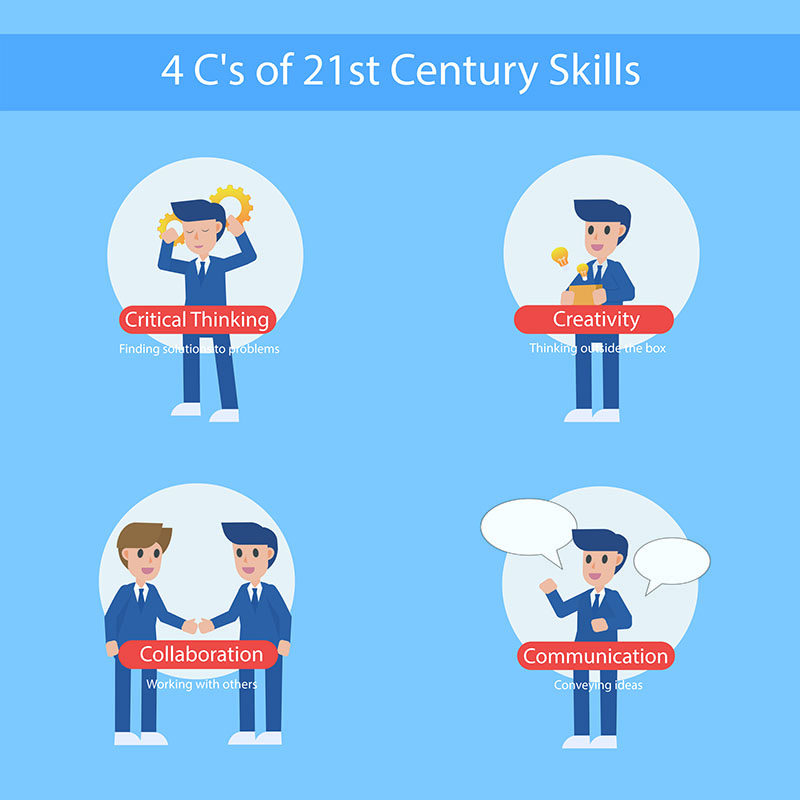
Learning needs to be fun, relevant, and engaging. Hundreds of studies on how children learn tell us that children learn best when they’re playing or investigating the world around them. Kids demand relevant learning environments. Yet, today’s educational landscape affords children few opportunities to learn through play and investigation. Twenty-first century skills require a demanding, novel approach.
Today’s students and educators are chronically frustrated by schools that teach to tests. Students must memorize long strings of irrelevant information. Teachers are forced into an exhausting schedule that takes the fun out of learning. The information children learn through this exhausting process often has little relevance to their lives or their futures. If you’re frustrated by a classroom dominated by drills and memorization rather than fun and engagement, you’re not alone. It doesn’t have to be this way.
Project-Based Learning: Get Your Students Excited About Learning 21st Century Skills
PBL offers an alternative to boring classrooms and exhausted educators. This approach to learning arms students with deep analytical and critical thinking skills that they’ll need for the rest of their lives. It prepares children for civic engagement, meaningful careers, rewarding hobbies, and even the many critical thinking challenges of parenthood.
Traditional and test-based teaching methods serve up a lot of disconnected information. Students don’t understand why they need this information, don’t see it as relevant to their lives, and spend much of their days bored. Teachers know the inevitable results: poor attention, distracted behavior, and stunted interest in learning. PBL connects information to students’ lives by engaging them in complex investigations and deep analysis.
How Does Project-Based Learning Work?
PBL engages student in a meaningful, relevant project. The gold standard for these projects is to include all of the following:
-
A challenging question or problem that requires ongoing investigation.
-
Authenticity. The problem must be relevant.
-
Student involvement and choice. Students should have input into the project and control over much of its direction.
-
Reflection. Students should reflect on their work in meaningful ways.
-
Critique and revision. Critique and revision both demand critical thinking skills and encourage students to create high-quality work.
-
Public product. Good projects produce something of value, such as a movie, a public presentation, or another product students can share.
PBL can be tailored to any curriculum goal and virtually any subject. In a science class, students might create a new evolutionarily-adapted animal. In a technology class, they might build a robot or gadget. These projects resemble the type of work many students will do in adulthood.
Project-Based Learning: Relevancy in the Real World
Consider the challenges your students may face in adulthood. They’ll need skills that can serve them in a career, especially STEAM skills. But preparing students for the real world is about more than just basic skills. Consider the challenges you and other adults encounter daily:
-
Planning your time
-
Negotiating with employers
-
Navigating conflicts with friends, family, and coworkers
-
Deciding how to parent your children
-
Advocating for yourself at the doctor’s office
-
Budgeting and financial planning
Adulthood is complex, and teaching to the test does not prepare students for its complexity. PBL does. By engaging with an authentic and challenging project, students are driven to dig deeply. They may have to manage conflicts with other students, master time management, consider hypothetical budgets, and learn how to separate useful information from irrelevant distractions. And they do so in an environment that teaches them STEM, reading, writing, life skills, and more.
These are skills that the 21st century demands. These are skills your students deserve to learn. Teach them in a fun, engaging way and watch your students’ minds expand.
Bridging the Gap Between Teachers and Administrators: How We Help
Project Pals knows that teachers are on the front line of the battle for students’ minds. We understand that teaching to the test is demoralizing and boring. They must also follow district standards and meet metrics set by administrators. Many educators are interested in project-based learning, but reluctant to try it. They worry they’ll raise hairs, get in trouble with the school board, or have their ideas rejected by administrators.
We can help bridge the gap. Project Pals appeals to students by creating an exciting learning environment, we help teachers again find joy and meaning in their work, and we offer metrics that administrators can review. With our approach, project-based learning is not just a diversion from the curriculum. It can become your primary curriculum.
Schools across the nation are already embracing this revolutionary, metric-based approach to learning. Join them. Teach your students how to solve the complex problems the 21st century will throw at them. Project Pals teaches students analytical skills that are relevant to every aspect of life. Watch your students excel and thrive. Let us show you how.
